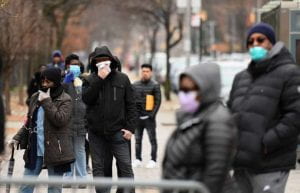The foster care system sees an array of cases where children have been entered because of death, abandonment, and even physical abuse. Did you know that there are approximately 400,000 kids within the United States Foster Care System from 2017 to present-day 2020? Probably not. Terrifyingly enough, another underreported fact is that 38% of all “removed children” were placed in Foster Care because of “Parental Alcohol or Other Drug Use Abuse Issues.” Before the children were rehomed, they faced reality drowned in addiction and neglect. Neglect caused by drug and alcohol abuse can resemble:
• Reduced capacity to respond to a child’s cues and needs
• Difficulties regulating emotions and controlling anger and impulsivity
• Disruptions in healthy parent-child attachment
• Spending limited funds on alcohol and drugs rather than food or other household needs
• Spending time seeking out, manufacturing, or using alcohol or other drugs
• Incarceration, which can result in inadequate or inappropriate supervision for children
A quick solution in a perfect world would be to rehabilitate parents addicted to alcohol and drugs and be reunited with their kids.
Look outside, the world is far from perfect.
Once these children enter the system, they can become addicted to the same substances that separated their families. It was reported by NCBI in 2012 that 34% of foster children said drinking alcohol at least once per month. Underage drinking can result in many consequences such as unintentional death and injury associated with driving or engaging in other risky tasks after drinking, homicide and violence, suicide attempts, sexual assault, risky sexual behavior, and vandalism and property damage. Although these detrimental factors, drinking is still a big issue for these children. This is the same demographic that also struggles with mental health disorders. Alcohol is a suppressant meaning that it lowers the part of the brain responsible anxiety. When a subpopulation such as Foster Kids is affected when a multitude of hardships such as frequent home changes, sexual abuse, physical abuse, and facing a high potential for homelessness, addiction is more likely.
This is heavy stuff, right?
As noted by the NCBI, there’s a strong correlation that childhood trauma breeds addicts. They reported that the most abused substance of individuals with childhood traumas is alcohol. When taking into account the childhood traumas placed on foster children, it is hard to imagine a plan in breaking this cycle of alcoholism.
But breaking the cycle isn’t impossible.
Organizations such as the National Association of Children and Addiction are fighting for families and children. On their official website, they noted that their primary purpose is to “Eliminate the adverse impact of alcohol and drug use on children and families and create a world in which no child who struggles because of family addiction will be left unsupported.” Organizations like this are increasing the likelihood of re-bonding families and breaking the cycle of addiction. So, what’s next? We must continue to support families with dependencies, eliminate stigmas around addiction, and implement mental health services for Foster Care children, to fully eradicate foster care and alcohol-induced trauma.

References:
About the children. (n.d.). Retrieved May 29, 2020, from https://www.adoptuskids.org/meet-the-children/children-in-foster-care/about-the-children
National Center on Substance Abuse and Child Welfare. (n.d.). Child Welfare and Alcohol & Drug Use Statistics. Retrieved May 29, 2020, from https://ncsacw.samhsa.gov/research/child-welfare-and-treatment-statistics.aspx
Braciszewski, J., & Stout, R. (2012, December 1). Substance Use Among Current and Former Foster Youth: A Systematic Review. Retrieved May 29, 2020, from https://www.ncbi.nlm.nih.gov/pmc/articles/PMC3596821/
Is Alcohol a Depressant? – Depressants. (2020, April 29). Retrieved May 29, 2020, from https://www.addictioncenter.com/alcohol/is-alcohol-a-depressant/
Bonnie, R. (1970, January 01). Consequences of Underage Drinking. Retrieved May 29, 2020, from https://www.ncbi.nlm.nih.gov/books/NBK37591/
Edited by Editorial StaffLast Updated: February 3, 2. (n.d.). Children of Alcoholics. Retrieved May 29, 2020, from https://americanaddictioncenters.org/alcoholism-treatment/children



